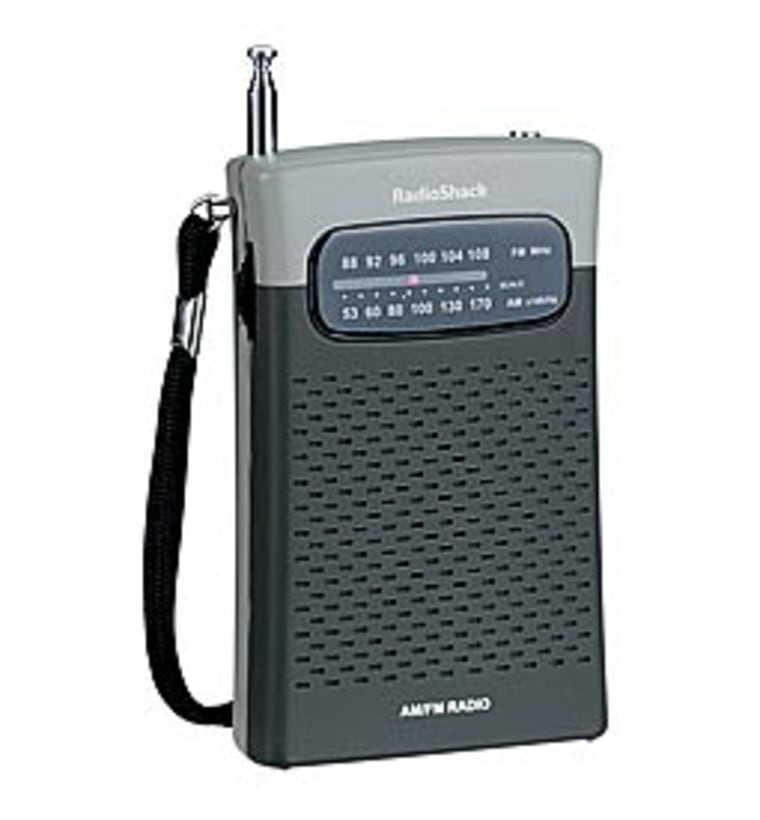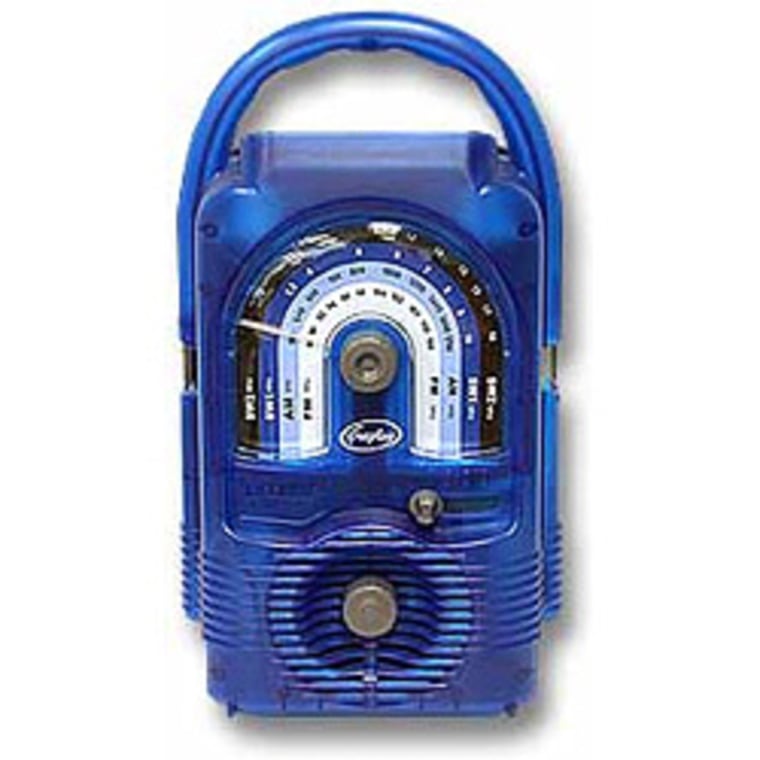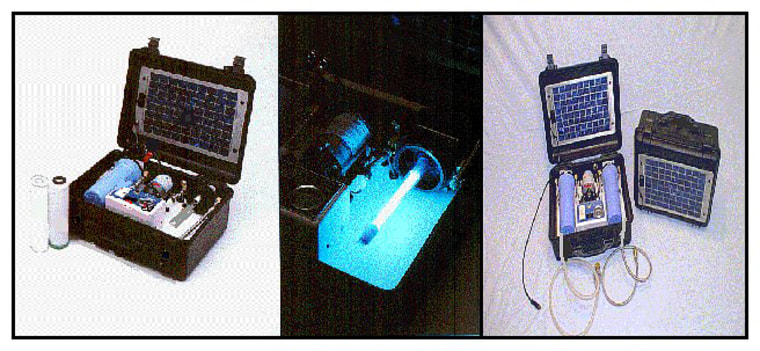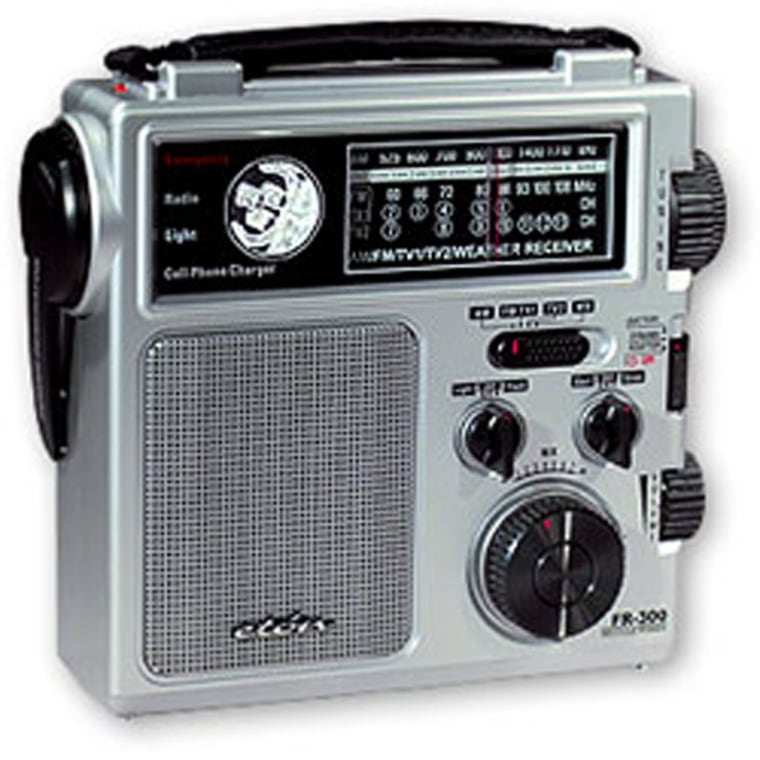The monster hurricanes that have hit the U.S. this year have shown that people need to be prepared for the worst in every way. Receiving up-to-date information during a major emergency can be just as necessary as a good supply of fresh food and water. That’s why it’s so important to have a portable radio available when life and limb are threatened.
And radios are useful even long after the storm has passed. Weeks after Katrina passed, for example, many New Orleans residents were still without TVs or the electricity to run them. The defining medium was radio.
In the wake of the storms, some radio stations joined forces to create a 24-hour-a-day emergency news and notification system, while others broadcast on borrowed shortwave equipment and frequencies to get the word out.
Transistor radios area a basic essential in disaster areas. Any portable radio will do, even the simplest small portable radio that runs on penlight batteries. If you don’t already have one, you can find them in drug stores, hardware stores, supermarkets and electronics stores.
Just to get an idea what’s available — and since you can find one of their retail stores almost everywhere, I did a quick check on Radio Shack’s Web site and found a number of small models that would be perfect in an emergency. Their small AM-FM pocket radio (12-467) sells for $16.99.

I found a few more shirt pocket-sized radios including an AM/FM portable (12-468) that also includes television and weather reception bands. At $29.99 it seems very handy for tracking hurricanes and the aftermath. There’s even one tiny Grundig portable radio (12-830) with AM, FM and shortwave which sells for $29.99.
The thing to remember about this or any standard portable radio is batteries. A fresh set of batteries might last a few days or maybe a week if you don’t keep the radio on 24 hours a day. A second set of new, dry batteries are a must.
Or, you can forget the batteries completely and get a radio that runs on hand crank power. Some models have a built-in flashlight or a small solar panel for daylight hours. One even will charge your cell phone battery.
I checked the C Crane Web site to see what’s available. For just under $30, there’s a Dynamo wind-up radio and flashlight. A few minutes of cranking power will reward you with an hour or so of listening.
The Eton FR300 is an AM/FM/TV/Weather radio that comes with a small LED flashlight and a system to charge your cell phone battery in an emergency. The radio sells for $49.95 — but it appears to be out of stock in online stores.
The people at Freeplay specialize in crank-powered radios. You can find these radios playing in every remote corner of the world, places where electricity is at premium, or non-existent.
Their radios start at $44.95 for the Ranger model (with flashlight) up to the $99.95 Lifeline (AM/FM/Shortwave with solar panel), and the heavy duty Freeplay Plus (AM/FM/Shortwave, 40 hours of power storage and a detachable LED flashlight) for $109.95.

Separate flashlights are an important item to have in an emergency too. The Maglite family of standard flashlights is well known for their lightweight aluminum exteriors and their rugged durability. Ranging from a single AAA cell model ($8.20) all the way up to a 6D cell monster ($36). Don’t forget extra batteries.
There are also flashlights with LEDs instead of bulbs producing the light. LED use a lot less power than bulbs which means the batteries last a lot longer. Prices for LED flashlights have come down in the past few years and now start just below $20.
One LED flashlight caught my eye. It’s called the Pak-Light and sells for $29.95. It’s a tiny device that fits on the top of a 9-volt alkaline or lithium (longer shelf life) battery. The flashlight is said to provide up to 200 hours of light with its high setting — and up to 1,200 hours on low. There’s a version with a red LED for increased night vision and one with a green LED for long distance vision.
When cell phone towers have been damaged and all wireless service is down the best way to communicate is via a satellite phone. There are a number of companies that will sell or rent you a satellite phone to use during emergencies.
I found a number of Web sites that rent equipment, but you might also want try the old-fashioned yellow pages for someone local. Prices are high, as you might imagine. For instance, one site was asking $39.99 for a one-week rental (slightly lower per week for longer rentals) and $1.59 per minute for using the phone. They provide you with two batteries. Recharging them might a problem in an emergency.

Clean and safe water is an item that we normally take for granted — until we don’t have it. Most purification systems need chemicals or electricity to make safer and cleaner water. But I’ve found one that doesn’t need to plug into the power grid.
Aqua Sun’s PWP-C is a totally portable system that can use either a 12-volt electrical system, such as a car or truck — or solar power. Water production from the device’s solar battery model is claimed to be up to 100 gallons a day.
With stories about what was left in the water after Katrina, however, I would suggest contacting local health officials before trying to purify local water.
